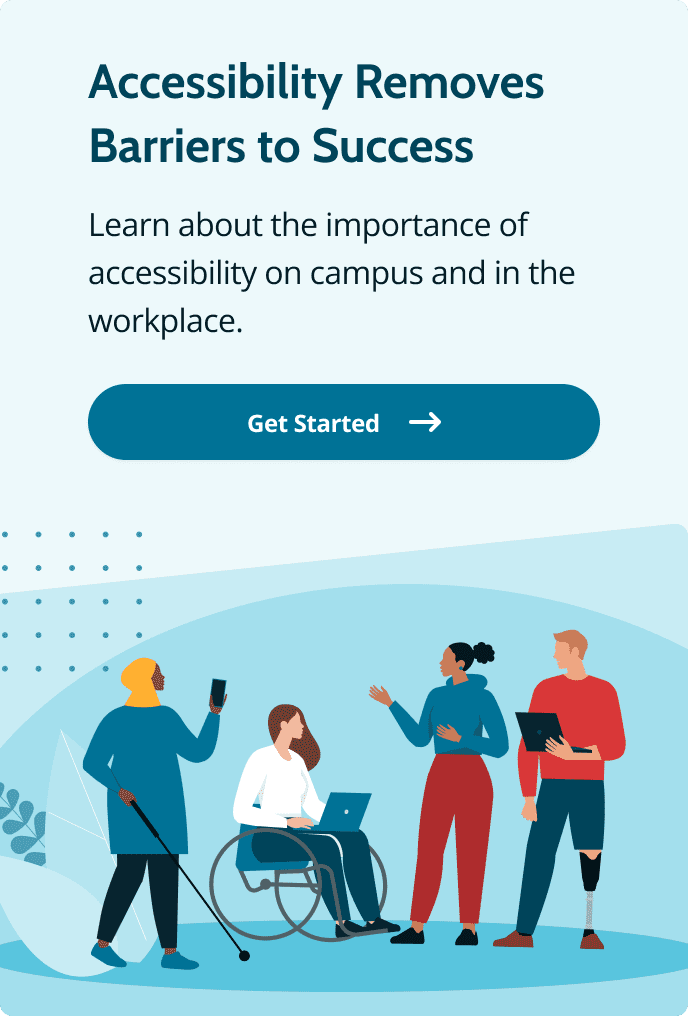Why Accessibility Matters for BIPOC Students with Disabilities
- The Americans with Disabilities Act celebrated it’s 30th anniversary in 2022.
- According to NCES, 19% of students reported having a disability in 2015-2016.
- The ADA prohibited discrimination against people with disabilities and increased their rights.
- BIPOC students with disabilities face significant barriers to education.
This summer, the Americans with Disabilities Act (ADA) celebrated its 30th anniversary. This landmark legislation prohibits discrimination against Americans with disabilities. However, people with disabilities still face significant barriers to education.
According to the National Center for Education Statistics (NCES), 19% of students reported having a disability during the 2015-2016 academic year. Of these students, about 80% were BIPOC. Disabled BIPOC students live at multiple intersections of marginalization and face more barriers than others. For many of these students, disability justice and racial justice are intertwined, as ableism, racism, and other barriers discriminate against and disable them, limiting their academic success.
What Is Accessibility?
Accessibility ensures equal access for everyone. Higher education accessibility policies shape how colleges and universities serve students with disabilities.
In higher education, accessibility means colleges and universities give students with disabilities the same opportunities to engage with educational content and perform their academic duties as their nondisabled peers.
Accessibility, and access itself, means something different for every student, depending on their background, social neurotype, ability, identity, and ethnicity. For many people in the community, disability is an identity.
Yale University reports that the most commonly reported disabilities were learning disabilities, ADHD, autism, mental health conditions, and mobility and hearing limitations.
BIPOC students with disabilities may need more specialized accommodations than other students with disabilities, as this group of students is often neglected, misunderstood, and mistreated.
Many disability advocates say that wider conversations about disability ignore this population. Their needs may be more unique or complex than most. Due to stigma, many need encouragement to seek out accommodations.
Access is especially meaningful for these students, as many of them face unique barriers nondisabled students don’t have to think about. Accommodations allow these students to engage with the course content, participate, study, and pass exams and classes as well as their nondisabled peers.
What Are the Barriers to Accessibility?
Disability barriers prevent people with disabilities from full participation in academic life. Students with disabilities face a variety of barriers. And these barriers vary, as every person is different.
Creating accessible educational environments means removing barriers that disrupt academic success for students with physical, visual, auditory, speech, and learning disabilities, as well as neurodivergent students and those with mental health conditions.
Disabled needs are human needs, and not all disability barriers are physical. A range of needs exists. Some relate to sensory and cognitive processing, while others have auditory or visual needs. Many students don’t yet know what type of help they need.
Five Common Accessibility Barriers
Why Accessibility Is Important for BIPOC Students with Disabilities
While every higher education institution should incorporate best practices when possible, remember that the disabled population is a large group that encompasses every imaginable identity — and accessibility isn’t just about disability.
For BIPOC students from various backgrounds, accessibility may mean that a classroom instructor considers their language choices. All students have different literacy levels, and some learners are not native English speakers.
Classrooms are diverse. Instructors who use plain language when possible include more students. Plain language users avoid jargon and difficult words to ensure all students can comprehend course content.
Inclusive language also enables BIPOC students with disabilities to learn and thrive in academic settings. Choosing inclusive language conveys cultural competency and shows respect for the diversity of all people.

Conclusion
The benefits of accessibility highlight the necessity of the social model of disability, a concept that views disability as disadvantages that stem from social environments that aren’t suited to all people.
The social model shows that barriers cause disablement. By removing barriers, we enable students.
While many students with disabilities can navigate college campuses, access digital content, study, and pass classes without additional help, many other students with disabilities face barriers they can overcome with reasonable adjustments.
An accommodation is not special treatment. Accessibility is not charity. The ADA requires colleges and universities to accommodate students with disabilities to help them learn as well as their nondisabled peers.